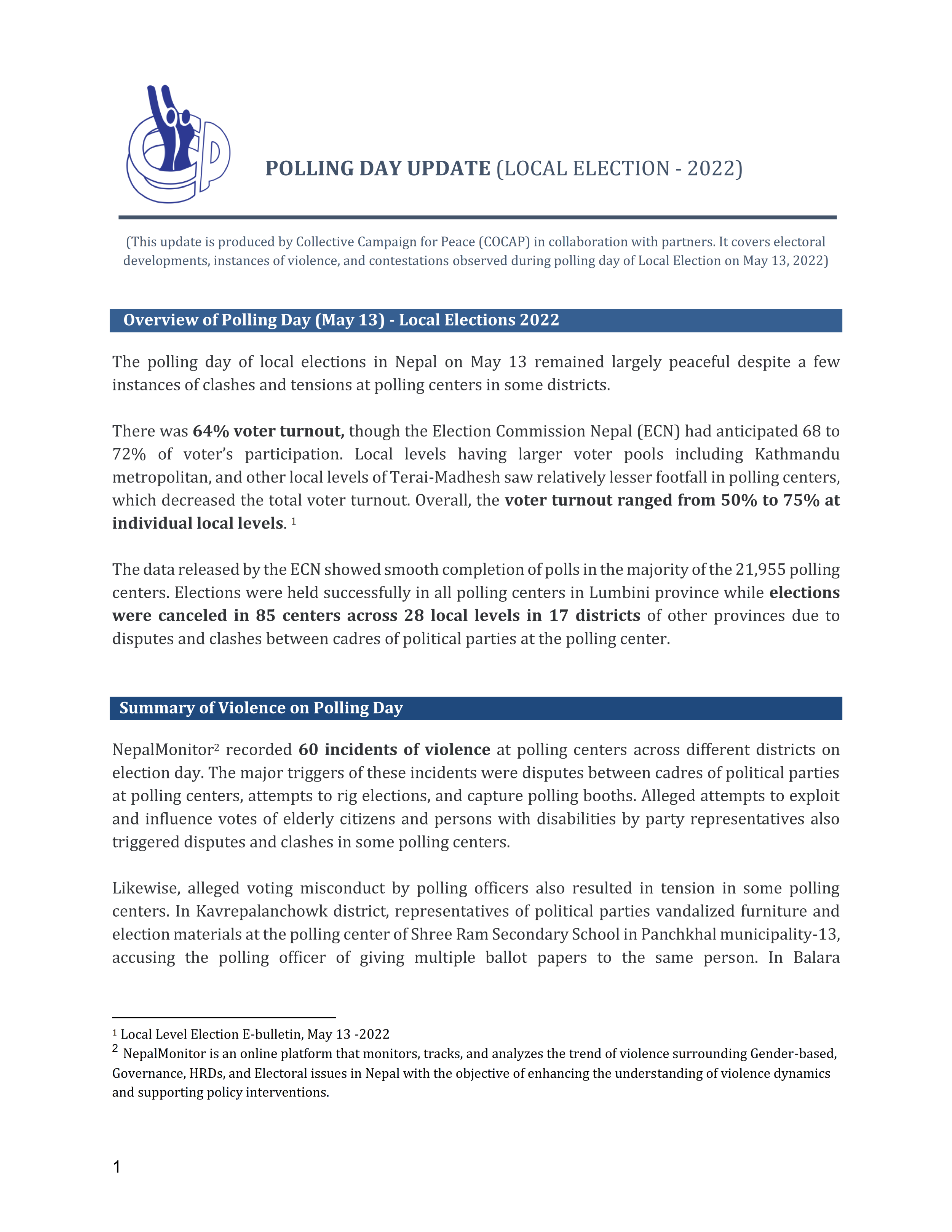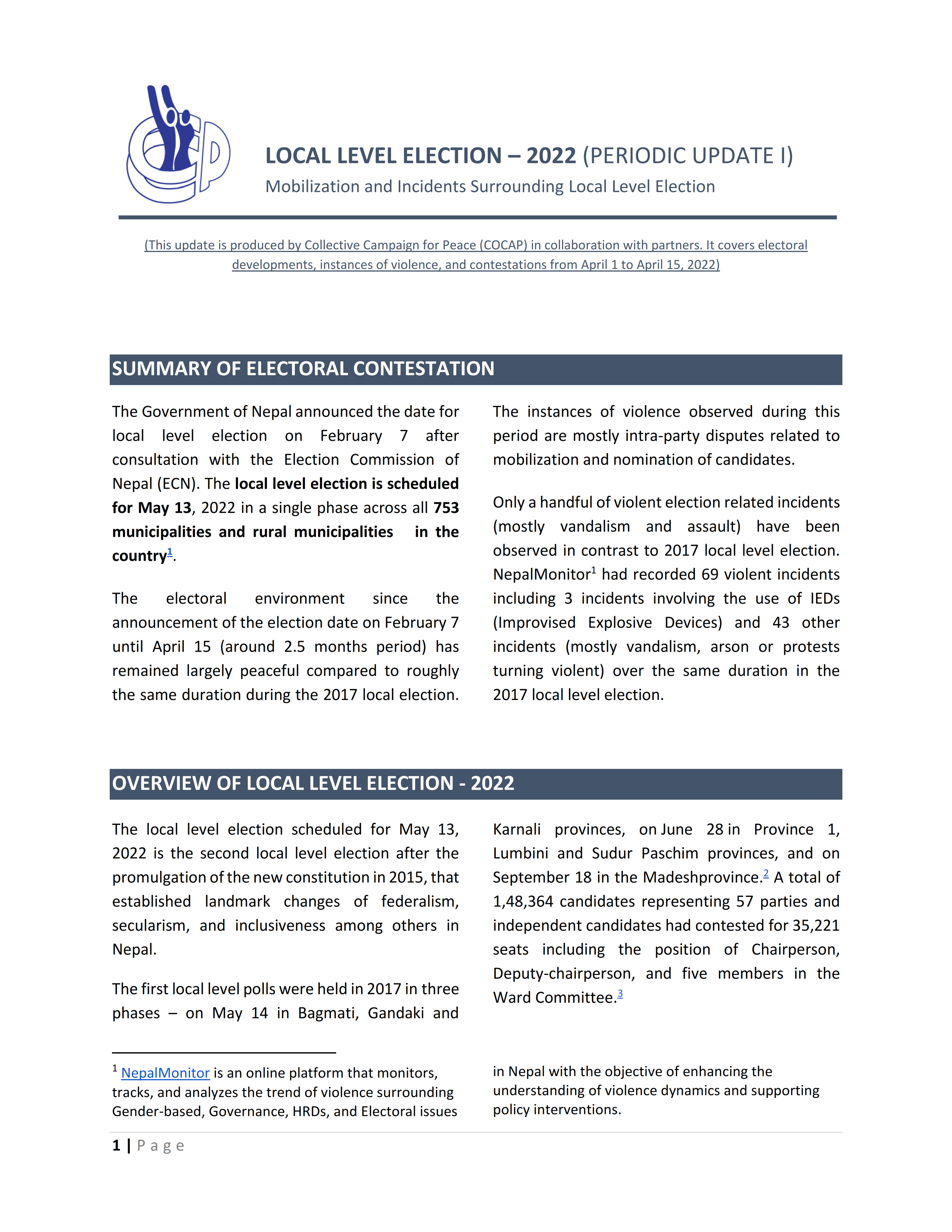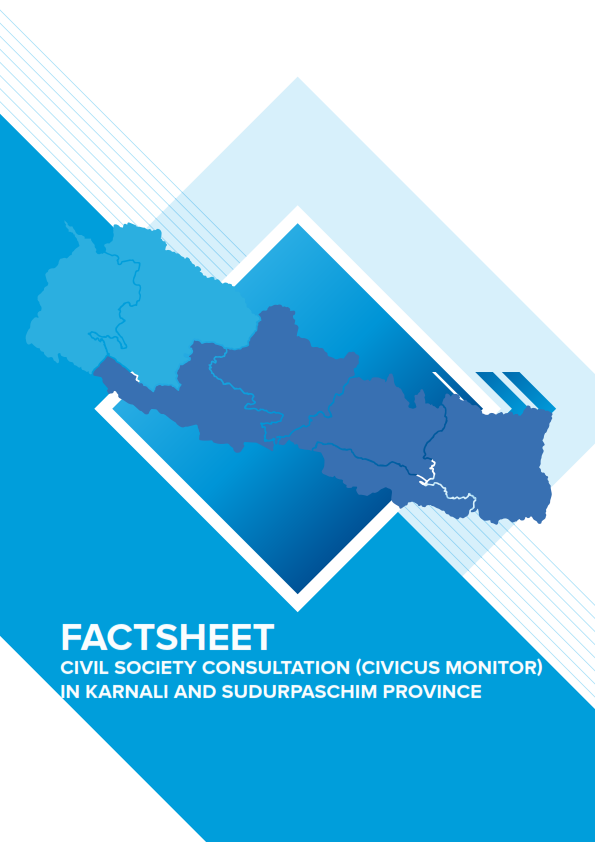Incident Reports
Post quake, fears of food deficit
2015-05-02
Nepal could face increased food insecurity in the wake of the Great Earthquake which will adversely hit summer crop plantation as well as winter harvests. The quake struck when farmers were preparing for corn and wheat harvests and paddy plantation that begins from May-end. The Food and Agriculture Organization (FAO) of the United Nations reckons that the quake--the country’s biggest in 80 years--has left some 3.5 million people in need of food assistance. It said some $8 million is urgently needed to help disaster-struck farmers rapidly recover lost agricultural inputs and resume preparations for the imminent paddy sowing season. Farmers who miss the planting season that is expected to start late May onwards will be unable to harvest rice--the country’s staple--again until late 2016.
The UN food agency said that although damage to the agriculture sector in Nepal has not yet been assessed, affected families have likely lost livestock, crops, food stocks, and valuable agricultural inputs. “As the earthquake has hit the country before the start of the main paddy growing season, prompt and effective rehabilitation of affected farmers would be a determining factor on food production,” said economist Madan Dahal. “Farmers will be ready to go to the field only if they are effectively rehabilitated.” “As the monsoon is the key for the rain-fed economy like ours,” Dahal said, “a slight variation in the amount and the timing of the monsoon would have a serious impact on the overall food production in the country.” He added that the breakdown in the supply of seeds and fertilizer inputs will also affect planting in the main May-to-September season. A late monsoon along with untimely rain is set to hit the paddy yield this fiscal, with the Agriculture Ministry estimating paddy output to drop 5.1 percent to 4.78 million tonnes. Nepal produced 258,435 tonnes less paddy compared to last year largely due to a late monsoon and untimely rainfall. The country has already imported food grains worth Rs 22.48 billion, up 33 percent, in the first eight months of the current fiscal year. Before the earthquake hit, the FAO estimated Nepal’s wheat production in 2015 at 1.8 million tonnes--some 5 percent below last year’s record harvest. But crop damage and farmers’ inability to harvest in earthquake-affected areas are likely to adversely hit this forecast. In addition, disruption of planting operations for paddy and maize may severely reduce the planted area for these crops in the most affected districts. “There is a critical window of opportunity to help crop producers plant in time in order to have paddy harvest this year and regain their self-sufficiency,” said Somsak Pipoppinyo, FAO Representative in Nepal. As the country is not able to ensure jobs to youth, Dahal said there could be a mass migration of Nepalis abroad seeking jobs. “Such migration pattern is ultimately felt on the farm sector.”
Former Finance Secretary Rameshore Khanal, however, said the earthquake would not have a significant impact on the farm sector as the major food-producing district in Tarai has not been affected much. “But the earthquake impact would be significant in other sectors like service and manufacturing,” he said. The Asian Development Bank’s initial assessment of the economic impact of the earthquake too stated that the service sector would be hit. The production activities, especially in the service sector, have been severely disrupted, mainly due to damage to physical infrastructure and distribution networks. According to the ADB, travel, and tourism is likely to be badly hit with most key hotels shutting down for the next few weeks to examine the structural integrity of their buildings. “The impact of the likely drop in tourism will be significant,” ADB said. The regional lender has projected Nepal’s economic growth to be around 4.2 percent from its earlier projection of 4.6 percent. The growth, however, will be much lower, if the supply-side disruptions intensify in the coming weeks. “Then the growth forecast may be further downgraded to somewhere between 3 to 3.5 percent,” said the ADB assessment. It estimates inflation would be on the higher side, due to supply-side constraints following the earthquake. Most importantly, food inflation is expected to remain in double digits as a result of high prices of cereal grains and vegetables.
Related Reports
Governance / Kathmandu
Medical education concern committee protest by banging plates and whistling
Governance / Darchula
Workers padlock school citing non-receipt of wages for more than a year
Governance / Sunsari
Prohibitory order issued in Dharan, tightening at entry points
Governance / Morang
Students of Eastern College in Biratnagar on protest
Related Trend Analysis
Analysis

THE NEPAL PEACE MONITOR ANNUAL REVIEW: 2020
October 25, 2021
Human Trafficking / LGBT+ Rights / GBV / Political / Children’s Rights / Senior Citizens’ Rights / HRD Issues / Human Rights / Interpersonal Violence / Governance / Covid-19 / Civic-Space / PwD

_001.png)




